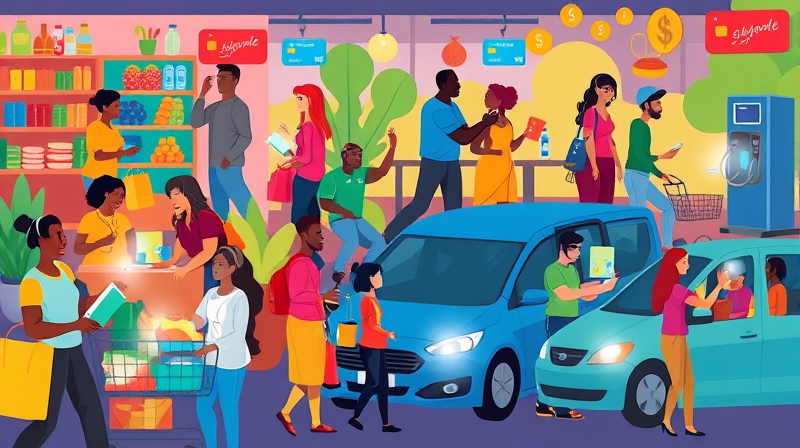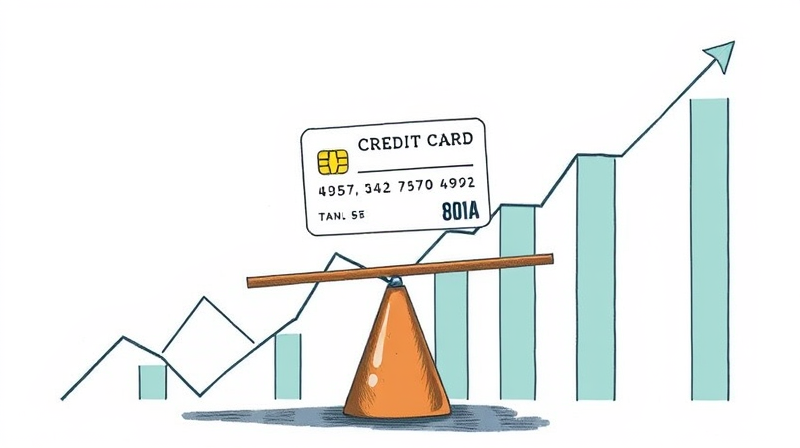
In today’s competitive retail landscape, linking your credit card to a favorite store can transform everyday purchases into enhanced rewards and discounts. As consumers seek smarter ways to stretch their dollars, co-branded and private label credit cards have emerged as powerful tools, contributing approximately $350 billion in annual retail spend—about 10% of the total credit card market. By understanding how these partnerships work, you can unlock significant value and make every transaction more rewarding.
From grocery aisles to online checkout pages, 91% of Americans say they value credit card rewards programs. Yet only 28% hold at least one co-branded card. By linking a card to your go-to retailer, you tap into accelerated rewards on purchases—for example, earning 5% back at Target with a RedCard or 3% back on Amazon purchases with a Prime Rewards card. These perks quickly add up, turning routine spending into meaningful savings.
Different demographics show unique preferences: high-income consumers often gravitate toward travel rewards, while Gen Z shoppers split their spending among retail (41%), travel (25%), and technology (17%) cards. No matter your age or income bracket, a retailer-linked card aligned with your frequent purchases can optimize every expense.
Despite 68% of consumers holding a general-purpose credit card, only a third explore co-branded options—signaling ample room for innovation. General-purpose card spend grew 6.7% annually (2000–2016), while private label cards saw 3.4% growth. As retailers refine loyalty features, we expect co-branded partnerships to surge, driven by data-driven personalization and mobile-first strategies.
Significant segment in the credit card market isn’t just industry jargon; it highlights how strategic partnerships can reshape spending habits. Retailers leverage shopper data to tailor exclusive offers, while banks benefit from interest income and interchange fees.
Linking a card to a retailer typically involves connecting your credit card with the retailer’s loyalty account—either automatically with co-branded products or manually through an online portal. Once connected, every purchase earns bonus points or cash back, and you can often redeem rewards directly at checkout.
Major retailers and issuers collaborate closely: banks underwrite and fund receivables, while retailers drive loyalty features and joint marketing campaigns. Data sharing extends to detailed SKU-level data, enabling banks to refine underwriting and retailers to offer hyper-relevant promotions.
Target Circle exemplifies modern loyalty integration. Members earn rewards, activate offers in-app, and redeem them at checkout via barcode or phone number. This model offers seamless omnichannel experiences, blurring the line between in-store and digital.
Amazon’s Prime Rewards card shows the power of ecosystem synergy. With 19% of co-branded spend on Amazon, cardholders enjoy automatic point redemptions at checkout and exclusive financing options on high-ticket items. These programs drive higher purchase frequency and deepen consumer engagement.
Selecting the right card depends on your spending profile. Frequent grocery shoppers may benefit most from cards offering elevated grocery rewards, while fashion enthusiasts might prefer department store co-branded options. Consider annual fees, interest rates, and redemption flexibility when making your choice.
Linking cards to retailers yields a trifecta of advantages. Consumers enjoy exclusive deals and accelerated point earnings, banks secure a steady stream of fee and interest income, and retailers gain deeper customer insights and increased loyalty. In many cases, retailers receive a share of interchange fees, while banks leverage detailed purchasing data to refine offers and minimize risk.
This synergy fosters a continuous feedback loop: data-driven personalization boosts engagement, leading to greater spend volume and more opportunities for tailored promotions. Such dynamics underline the mutual value at the heart of co-branded partnerships.
As retail shifts toward omnichannel, card programs must adapt. Real-time notifications, digital issuance, and location-based offers represent the next frontier. However, stagnant growth in store card usage underscores the need for innovation, particularly for smaller issuers and niche markets.
Emerging trends include app-based enrollment, instant virtual card issuance, and AI-driven personalization. Regulators are also paying closer attention to data privacy and fair underwriting practices, ensuring that consumers receive transparent, secure experiences.
Linking your credit card to favorite retailers isn’t just about collecting points—it’s a strategic approach to unlock maximum value from daily spending. By choosing cards aligned with your shopping habits, activating loyalty offers, and staying informed about program updates, you can turn routine purchases into significant savings.
Whether you’re a seasoned rewards enthusiast or just beginning your loyalty journey, take advantage of co-branded opportunities. Your wallet—and your future self—will thank you.
References













